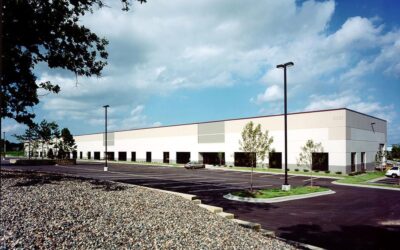NEWS POST
To Sublease or Not? That is the Question

With so much disruption in the office marketplace, some office real estate users may find their best fit to be sublease space that offers pre-built areas including conference rooms, a breakroom, offices, and huddle rooms – many of which come with furniture and AV equipment. It’s rare to have so many sublease options available, but it makes sense for tenants to consider them given the substantial financial discount offered when completing a sublease.
Our research of the office sublease market combined with our anecdotal experiences with both tenants and landlords shows that the Minneapolis/St. Paul market has the largest amount of sublease space ever available – even more than the Great Recession in 2008-2010. In mid-July, there were 98 sublease options over 5,000 sq. ft. It should be noted that more than half the sublease space available is more than 20,000 sq. ft. – of which there are 21 Class A options, 34 Class B and C.
While it is unique to have users interested in larger blocks of sublease space, Thompson Reuters will be subleasing more than 300,000 sq. ft. in Eagan at the former Prime Therapeutics campus. Thompson Reuters will sell most of its former campus which is more than 1 million sq. ft.
When it works:
Subleasing works well for businesses with uncertain growth projections or temporary space needs that the business may not want to invest the capital to pay the expense of construction, furniture, and AV equipment. Those growing/in transition companies may also want flexibility for future space needs or to test a temporary second location.
Subleasing can be more cost effective than signing a direct lease with a landlord. Sublessors offer more competitive rental rates to attract subtenants making it an appealing option for those looking to save on rent expenses. In many cases, sublease space can be leased for up to a 50% discount on the direct rent for the same space.
For some users wanting to take advantage of existing build out, furniture, fixtures, and equipment, but want the stability of a long-term direct lease, these users can approach the landlord directly to work out a buyout agreement. Furthermore, depending on the buyout amount, the landlord may be able to offer augmented incentives and concessions to secure the new longer-term deal. Provided the new tenant has acceptable credit, the new lease term extends beyond the original expiration and the original tenant and landlord can come to an agreement on the buyout amount, these situations can be a win-win-win for all parties.
If your business is considering a sublease space:
- Review the credit of the original tenant. If you are paying them rent, they also need to pay the landlord. If that original tenant stops paying, your company could get kicked out of your subleased space or be asked to pay significantly increased rent.
- Understand how subordination works. If you have a verbal agreement with the new landlord, the written language will supersede a verbal agreement if the building is sold.
- Understand the terms and conditions of the original lease. Some language – such as the number of parking spaces, the hours of allowed operation, allowed use – may not work for your business.
- Evaluate whether exclusives are included in the lease language. Those exclusives may preclude specific businesses – mortgage or title company for office space or a competing specialty medical practice – from occupying a vacant space.
- Finally, review the credit of the landlord. Many owners of office space may have financial challenges due to the rising interest rates and declining occupancy rates in office properties.
When it doesn’t:
Subleasing may not work because the subtenant must agree to take the space in its current state – and with its lease obligations. Subtenants with unique space uses or more parking needs than the current contract allows may be better off finding vacant space and negotiating for those unique needs directly with the landlord.
Like any lease obligation, subleasing is a contract that needs to be fully understood before being executed. In all cases, businesses should have the appropriate counsel to represent them — not the original tenant or the landlord – to ensure that their needs are met for the short-and-long term. Of course, I’d suggest you contact one of Forte’s advisors for our experience, personal attention, and in-depth knowledge of the costs that get rolled into any lease term.
This article was featured in our Q3 Newsletter. Click here to view.
Written By: Katie Trevena, Vice President Real Estate Advisory
Katie has been involved in commercial real estate for 16 years. She serves and supports office and healthcare clients to strategically align clients’ business goals with their real estate needs.
Your Purpose. Our Passion.
Real Estate Advisory

Katie Trevena
Vice President | Real Estate Advisory
o: 952-525-3332 c: 612-481-1699 katie.trevena@forterep.com
News & Updates
Forte Real Estate Partners’ Appointed Property Manager of Lexington Commerce Center
NEWS POSTForte Real Estate Partners’ Appointed Property Manager of Lexington Commerce CenterMinneapolis (July 11, 2025) – Forte Real Estate Partners is pleased to announce its newest property management assignment at Lexington Commerce Center, a premier Class A...
Founders Properties to move to 6,500 sq. ft. in Eden Prairie
NEWS POSTFounders Properties to move to 6,500 sq. ft. in Eden PrairieMinneapolis (June 23, 2025) – Founders Properties, a privately held real estate investment management firm, has decided to move out of its long-time Minnetonka home to 6,500...
Forte Real Estate Partners Recognized as one of MSP Business Journal’s Best Places to Work
NEWS POSTForte Real Estate Partners Recognized as one of MSP Business Journal's Best Places to WorkMinneapolis (June 16, 2025) – Forte Real Estate Partners has been recognized for the third year in a row as one of Minneapolis/St. Paul’s Business Journal’s Best Places...



